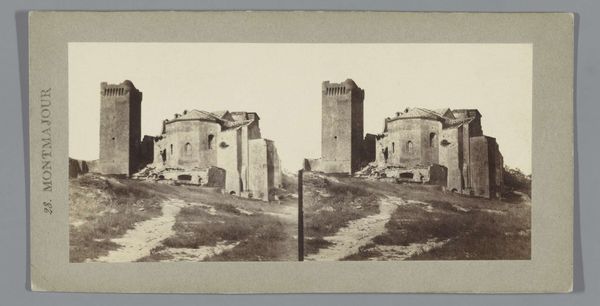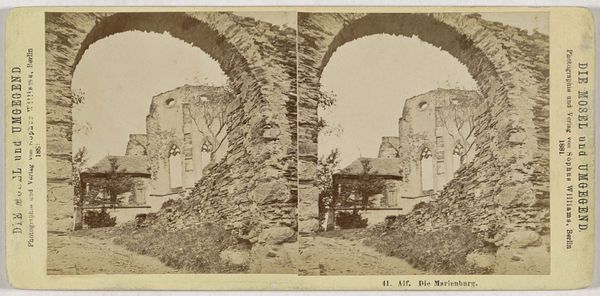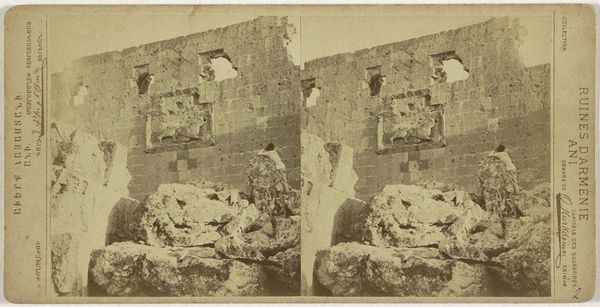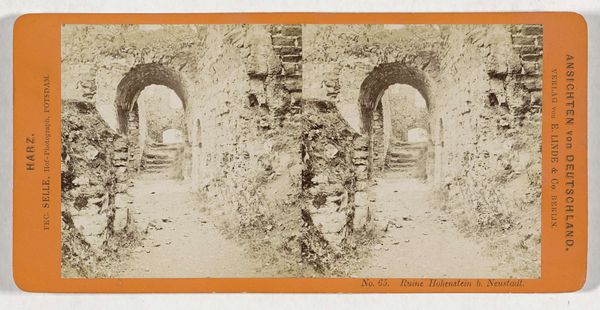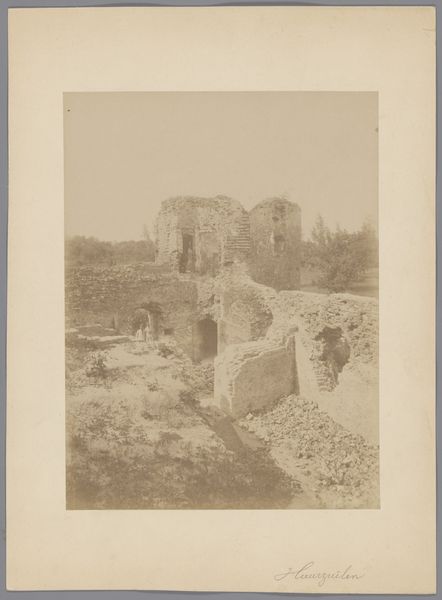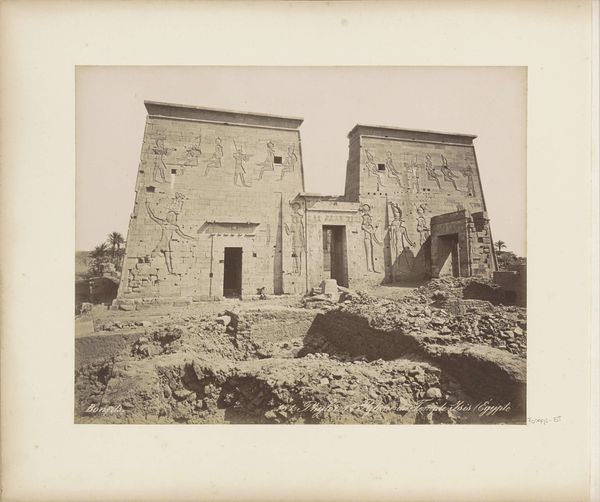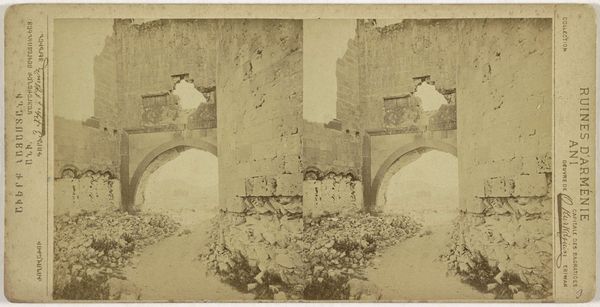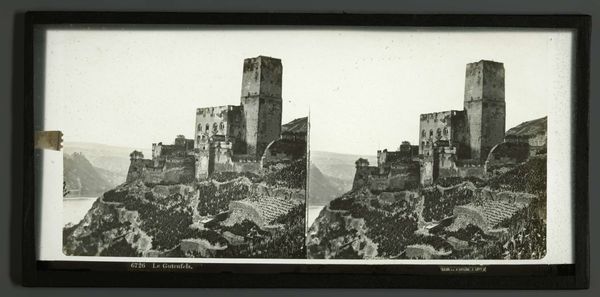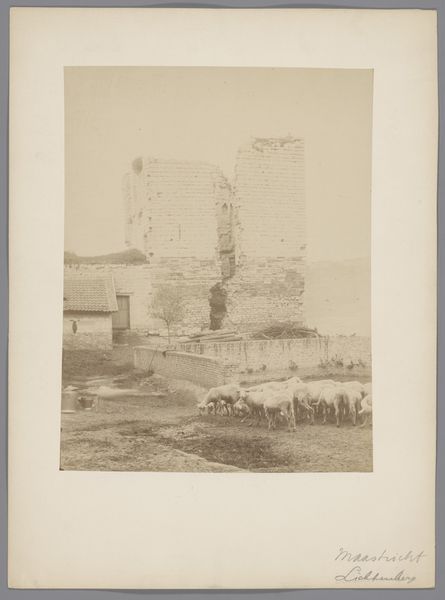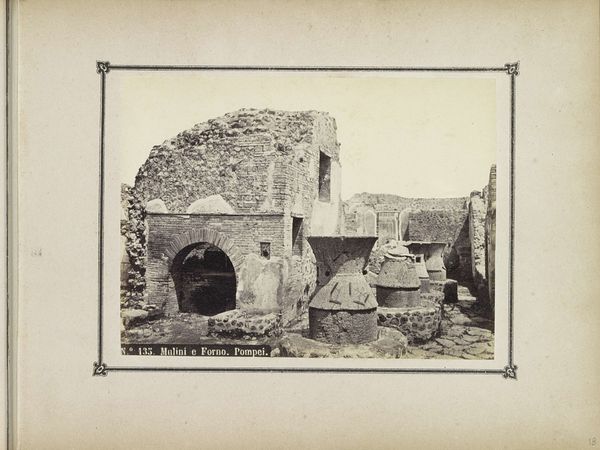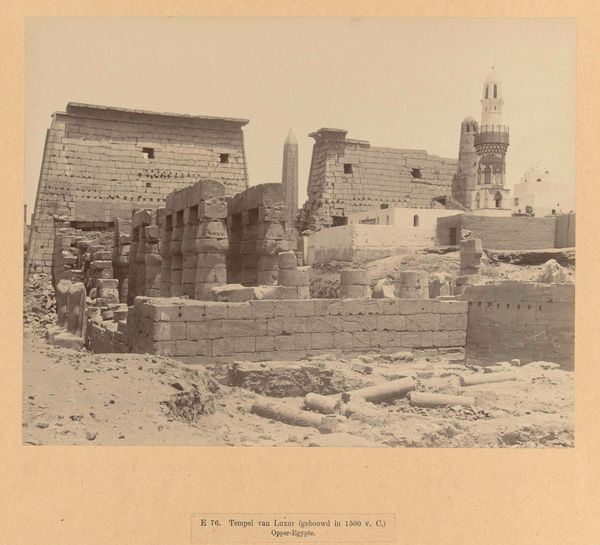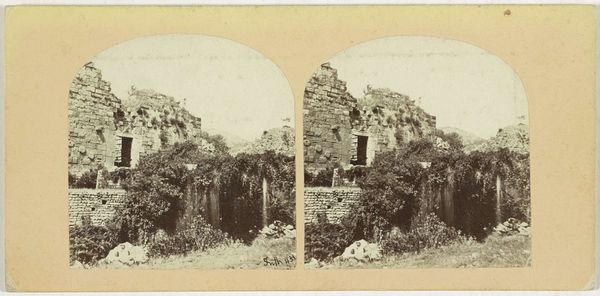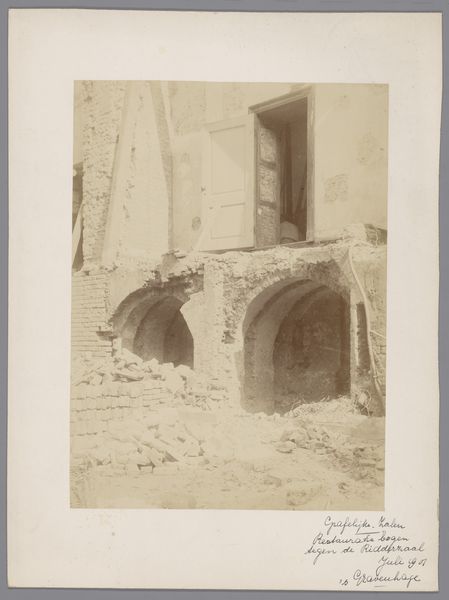
daguerreotype, photography
#
asian-art
#
landscape
#
daguerreotype
#
photography
Dimensions: height 90 mm, width 178 mm
Copyright: Rijks Museum: Open Domain
Editor: So, this is "Ruïne van de Leeuwenpoort en een toren, Ani," a photograph from sometime between 1875 and 1880 by Onnes Kurkdjian. It's a very sepia-toned image of, well, ruins. They feel quite monumental, even in their state of decay. What stories do you think are embedded in this particular image? Curator: The weight of cultural memory here is palpable, wouldn’t you agree? Note the lion gate, itself a symbol of power and protection. To see it crumbling... it evokes a sense of loss, of empires faded. What echoes do you feel reverberating from that time, when the photo was taken? Editor: It feels very romantic, almost like a postcard from a forgotten world. The way the light falls on the stone, emphasizing the texture... But there's also something undeniably sad about seeing such a powerful structure reduced to rubble. Curator: Precisely! Light itself, you know, bears symbolic importance. How do you feel light acts as a visual language? Here, I'd suggest, it shows not just architectural decay, but the fracturing of cultural identity. The tower stands tall, even fragmented, against the horizon. It whispers of resilience. What narratives do those enduring forms suggest to you? Editor: I guess I see how even in ruins, it's a statement about survival. And maybe about how even the most impressive achievements eventually succumb to time? That the present has to grapple with history as a physical presence? Curator: Beautifully put. Time, indeed, is a voracious consumer, and yet, as this image shows, the imprints we leave, and the stories we remember, linger on. An Iconographer reads the stones, do you not find that idea compelling? Editor: Definitely. It's like the photo itself is another layer of history being added to the site, encoding and decoding what we see. Thanks, I'll look at architecture differently now.
Comments
No comments
Be the first to comment and join the conversation on the ultimate creative platform.
